Like most people I enjoy a nice dayhike to get the blood flowing and mess around with my gear. However the sun doesn't always shine. I am talking about a nocturnal version of a dayhike from start to finish. So it's a night hike. Yup! This is a good way to practice skills for doing things in the dark.
It was raining for days and now the temps dipped just enough for light snow.
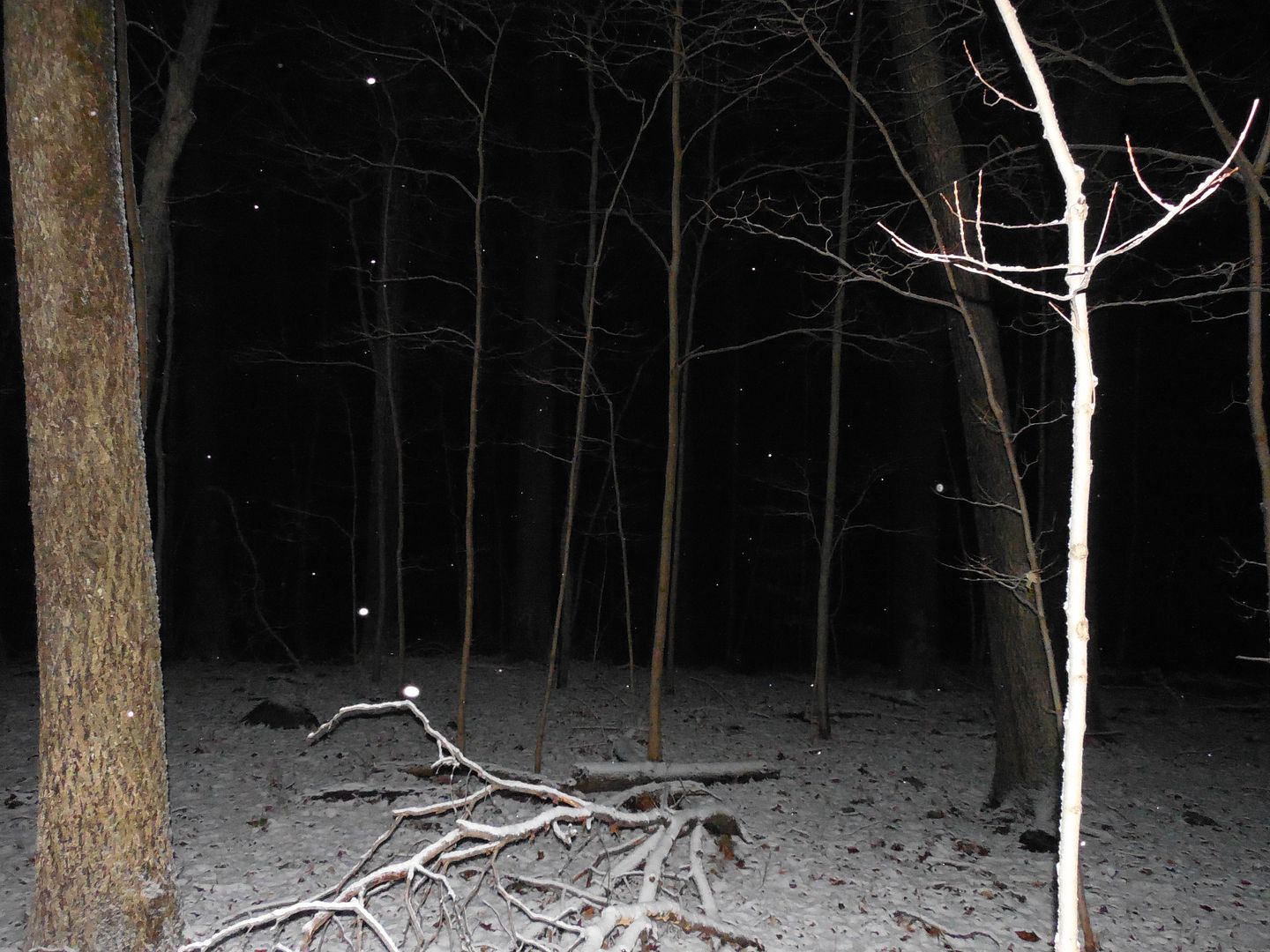
Sometimes hanging beech leaves make for good tinder however given the weather they're frozen. So far no birch bark either.
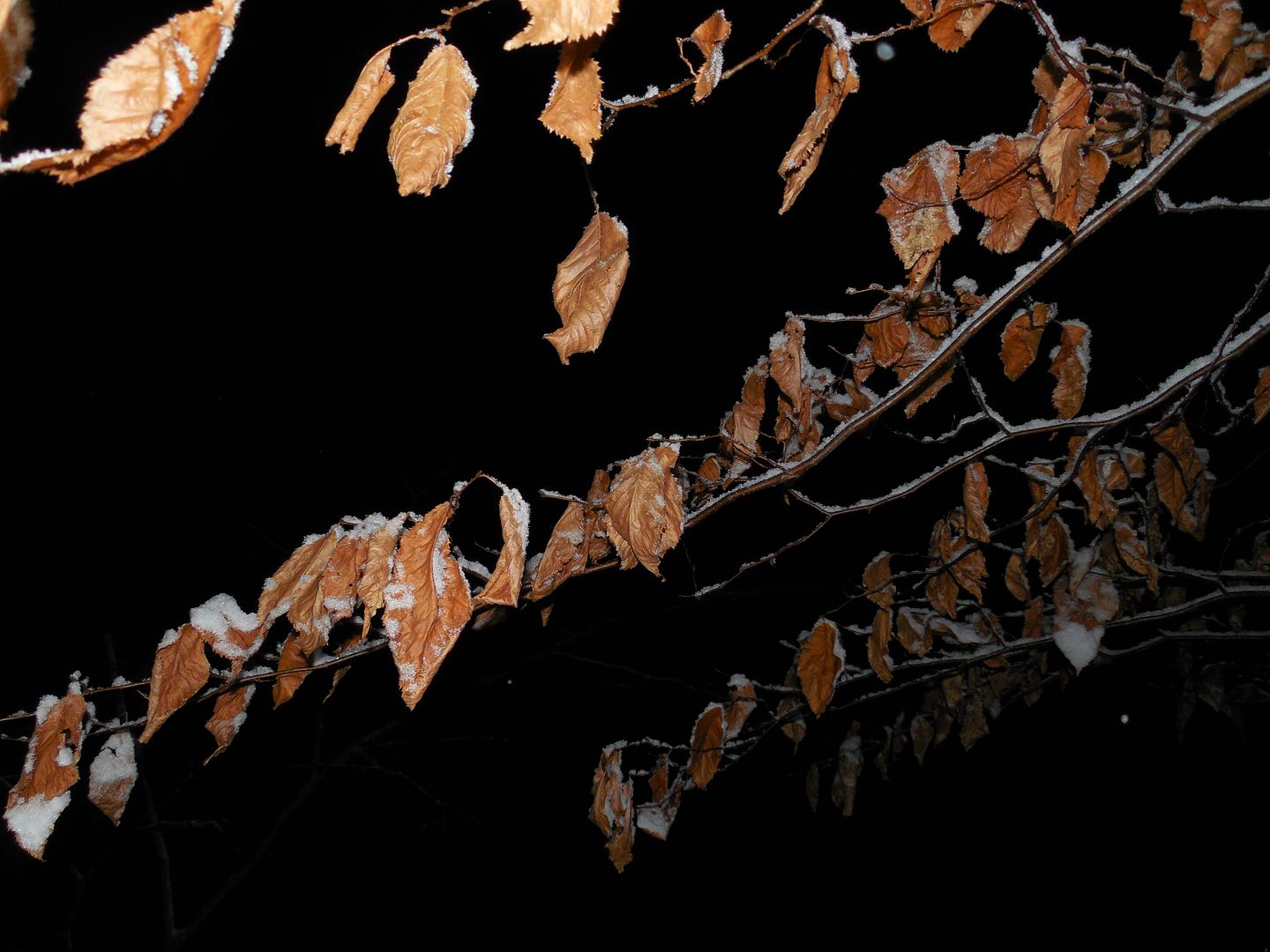
Dang fallen trees. Hate getting hung up on them. They always remind me of those movie deaths when someone gets impaled on a stake.
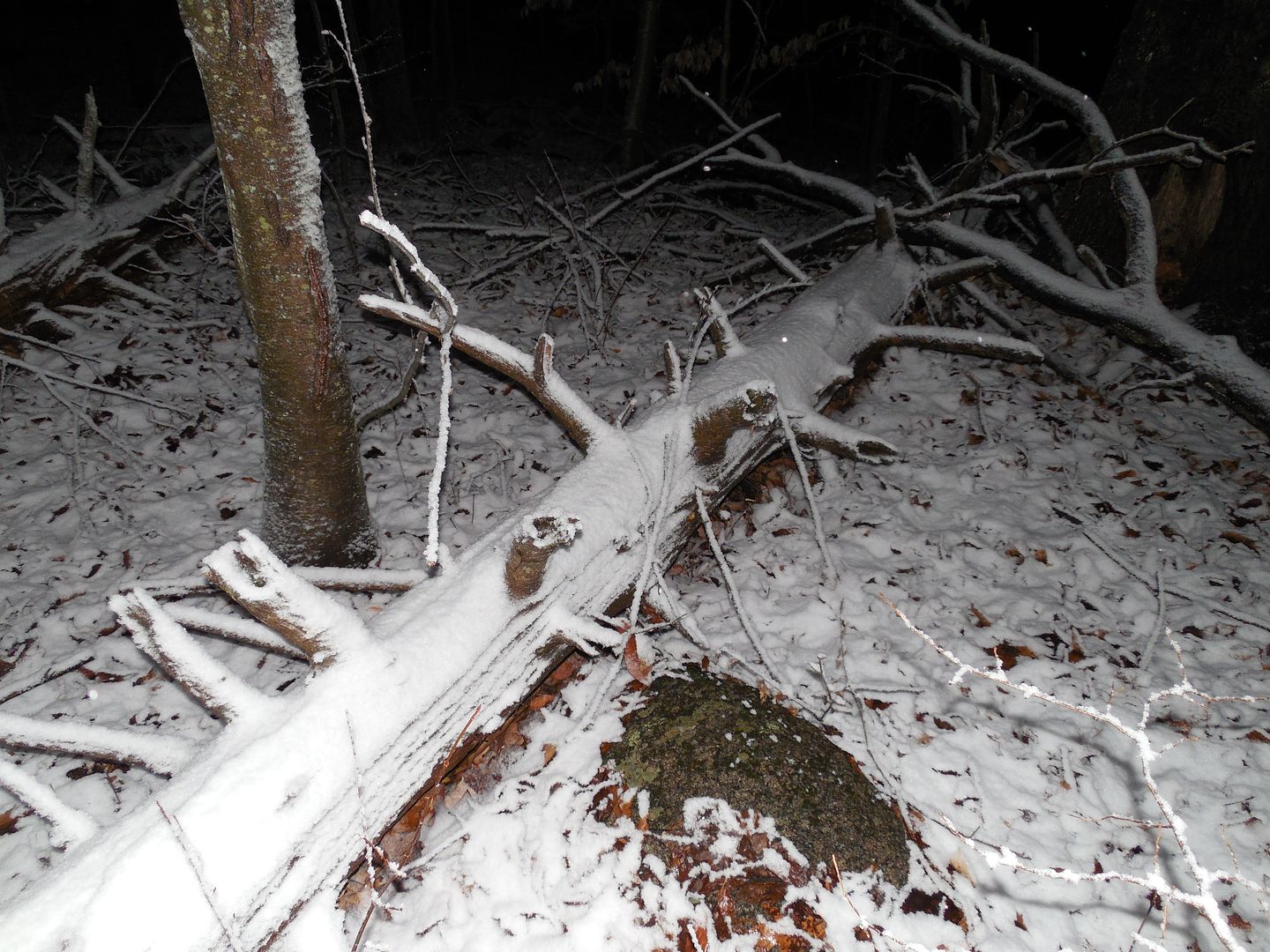
This is a nice semi sheltered spot for a night shelter. A little grove of guessing Black birch and Iron wood/Blue beech.
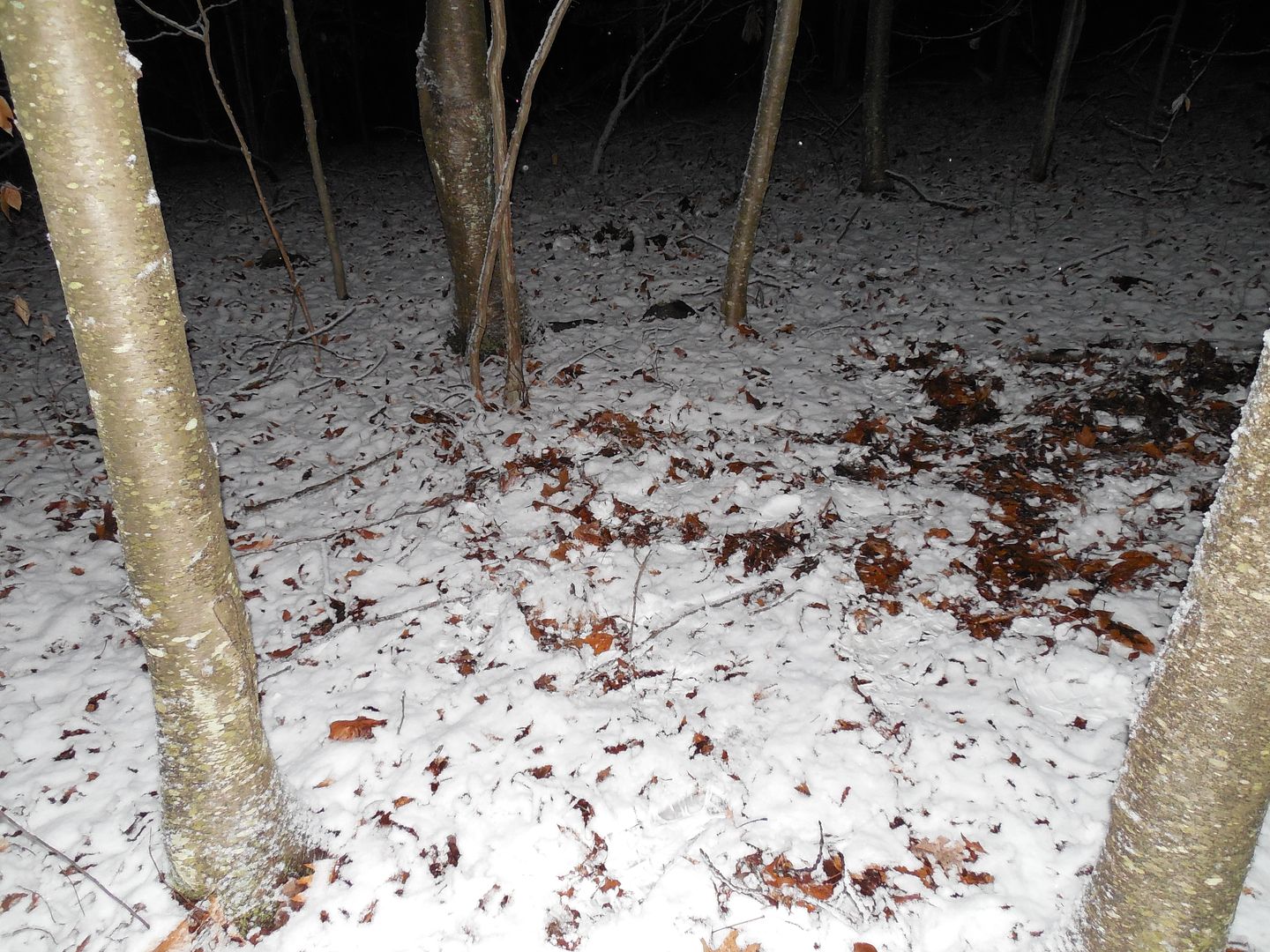
A night what? A day camp is a temporary shelter for the purpose of rest and refreshment or if weather makes further travel too difficult. Once the meal is done and or the weather breaks a day shelter is taken down. The night shelter serves a similar purpose. Both shelter types should be fast and easy to setup. Minimal investment of effort. I normally use a small tarp like a Siltarp 1, MEST or poncho for this purpose. Keep in mind that any day shelter could be tasked with becoming an overnight camp. With a night shelter the odds are greater in this reguard. The same rules for a standard overnight camp applies to both a daycamp and nightcamp. I Look for widow makers, flash flood risks, mud/rock slide risks, drainage issues etc etc etc. Being near water is nice and might be necessary in some situations but not a requirement given the short duration.
Cracked out the adjustable ready to go ridgeline. I always keep my raingear, FAK, water and day/night shelter gear in an easy to access area within my pack. The last thing I want to do is dump the contents of my pack getting to these items. More so in the dark.
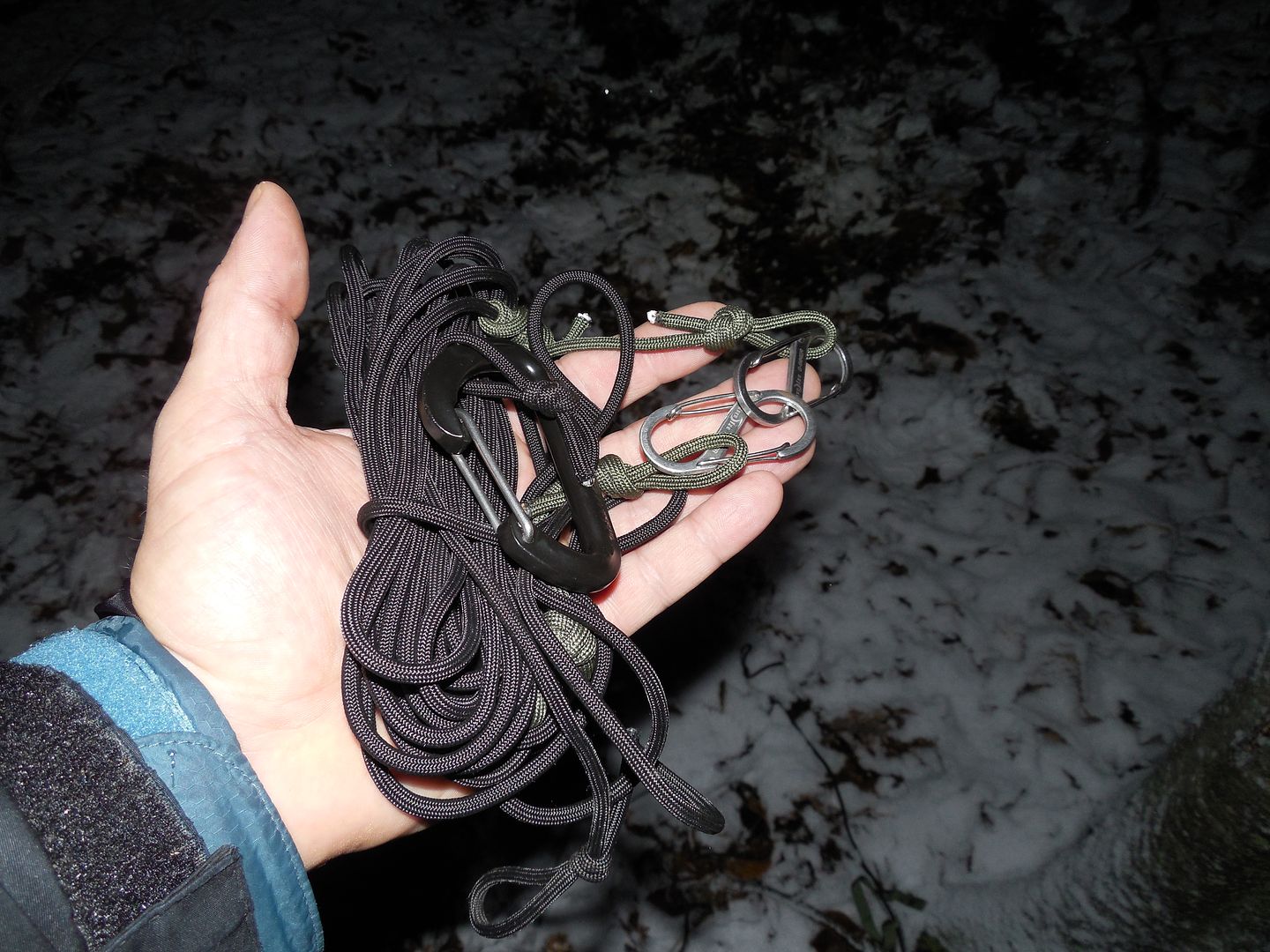
A few minutes later and bingo I have some shelter! For a temporary shelter I prefer the tarp be hung higher unless the weather is really bad. This way I can do things faster without the need to crawl around. I used Wetfire to start my wood stove. Normally I would use birch bark or other natural tinder however had a single cube for an ER inside my hiking/GetMeHome green bag so why not? Yes Wetfire can ignite wood pellets alone.
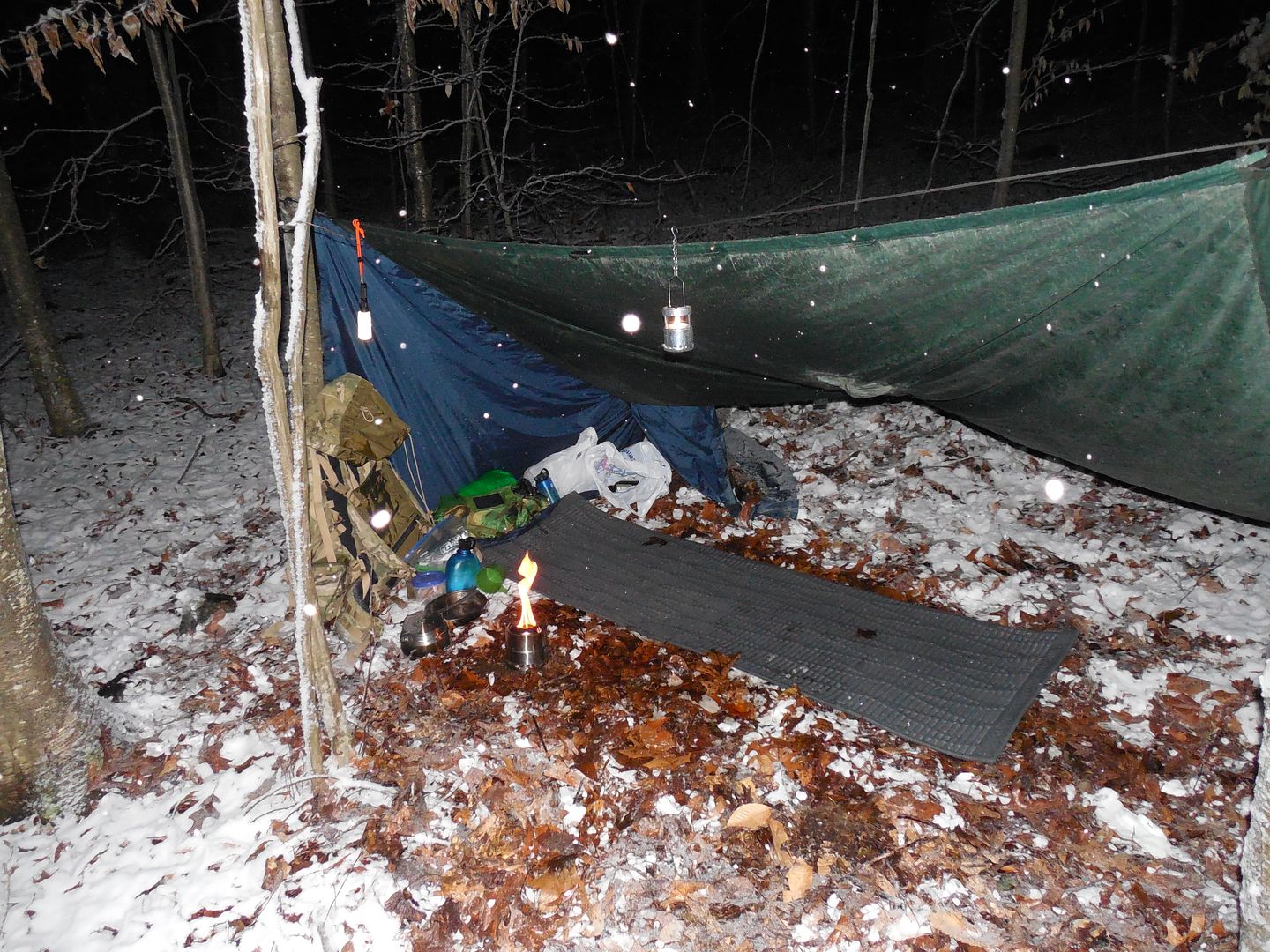
Extra large Ridgerest closed cell pad for the win.
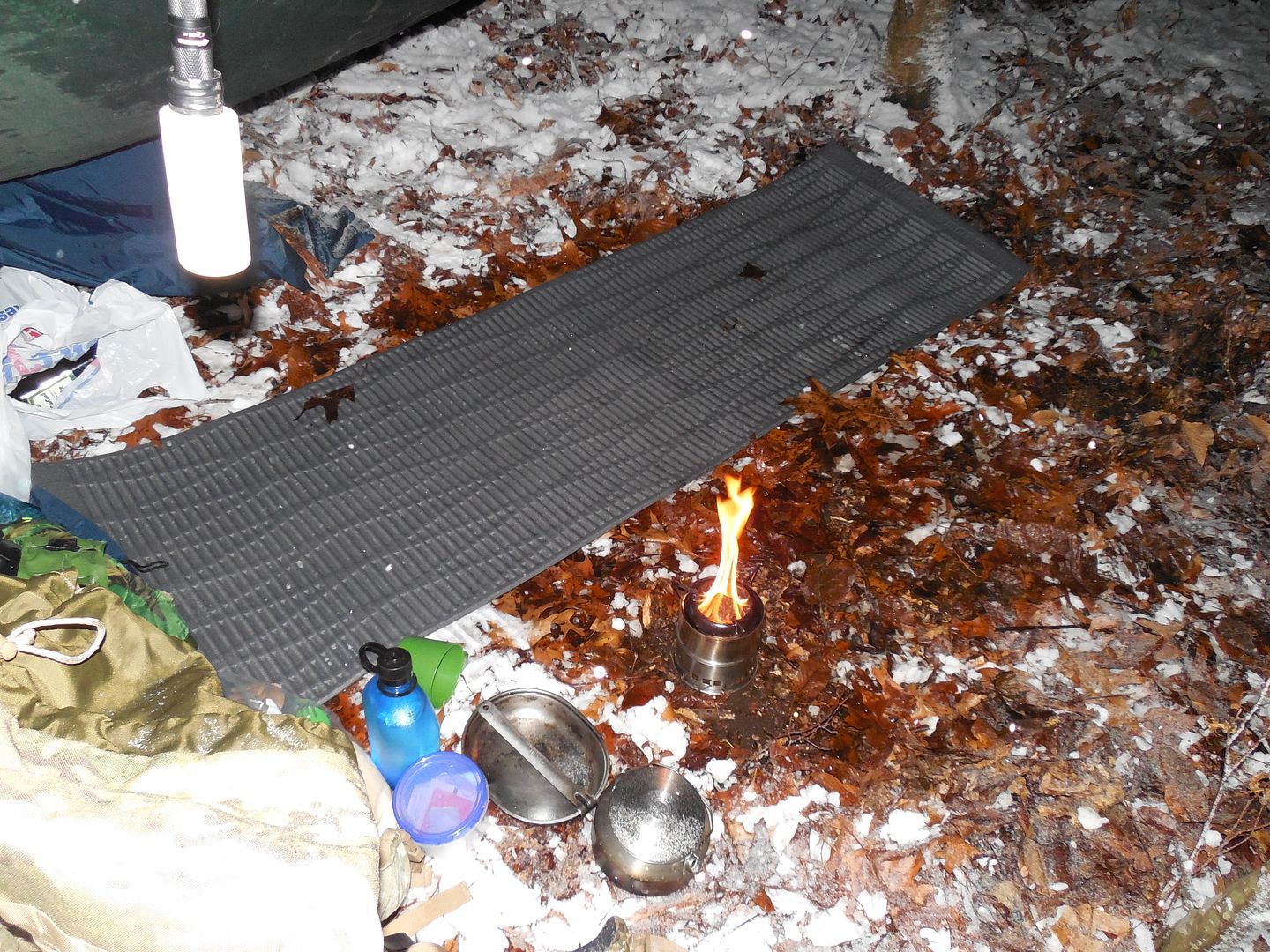
Used my ground cloth and pack for a wind break on the side which I intend to sit and place my head when resting.
Inside:
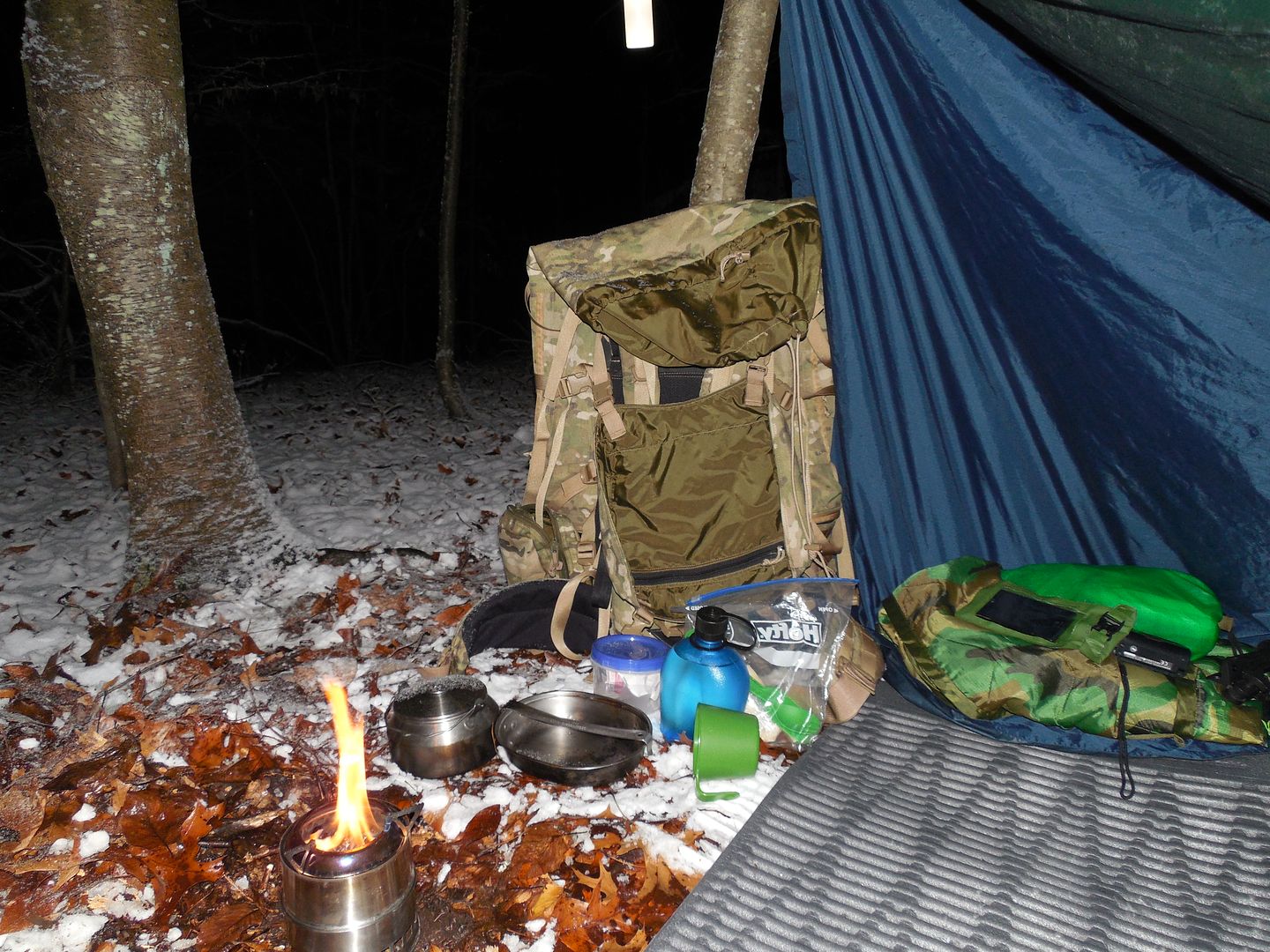
Outside:
Notice the snow melting on the poncho where I sat. A small fire does add a bit of light and heat to the lean-to. I still need to replace my last Mylar blanket which was used as a heat reflector. Going to put some duct tape grommets on a new one.

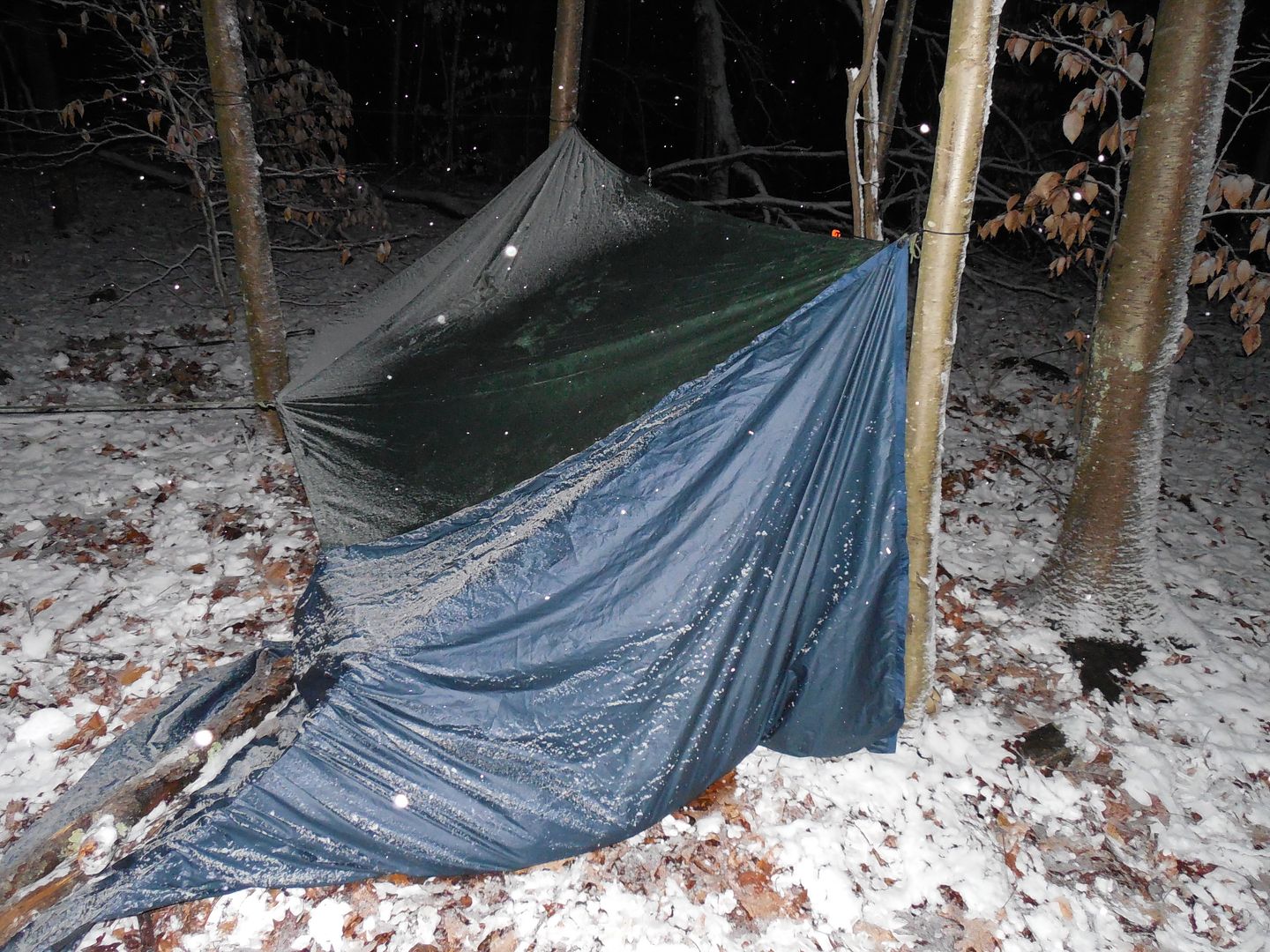
Cooking cheese filled bannock.
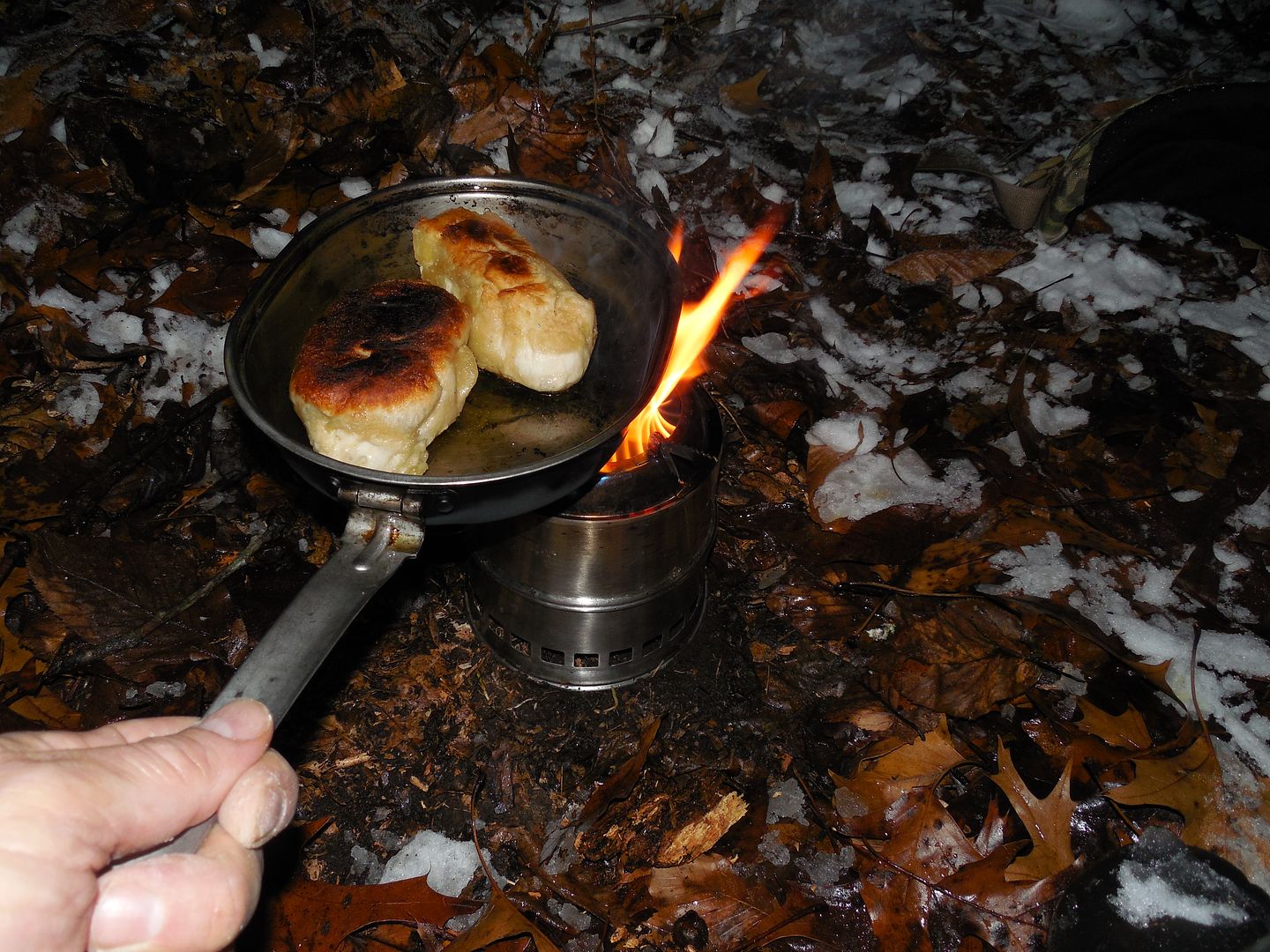
No camp feels complete without a kettle boiling water.

Tested out my new lights. That's one of the pros of a night hike. Going to post a review on the Goal Zero USB light soon. Had lower output USB lights for a few years but never considered that entire class of portable lighting to be of value. Times are changing.
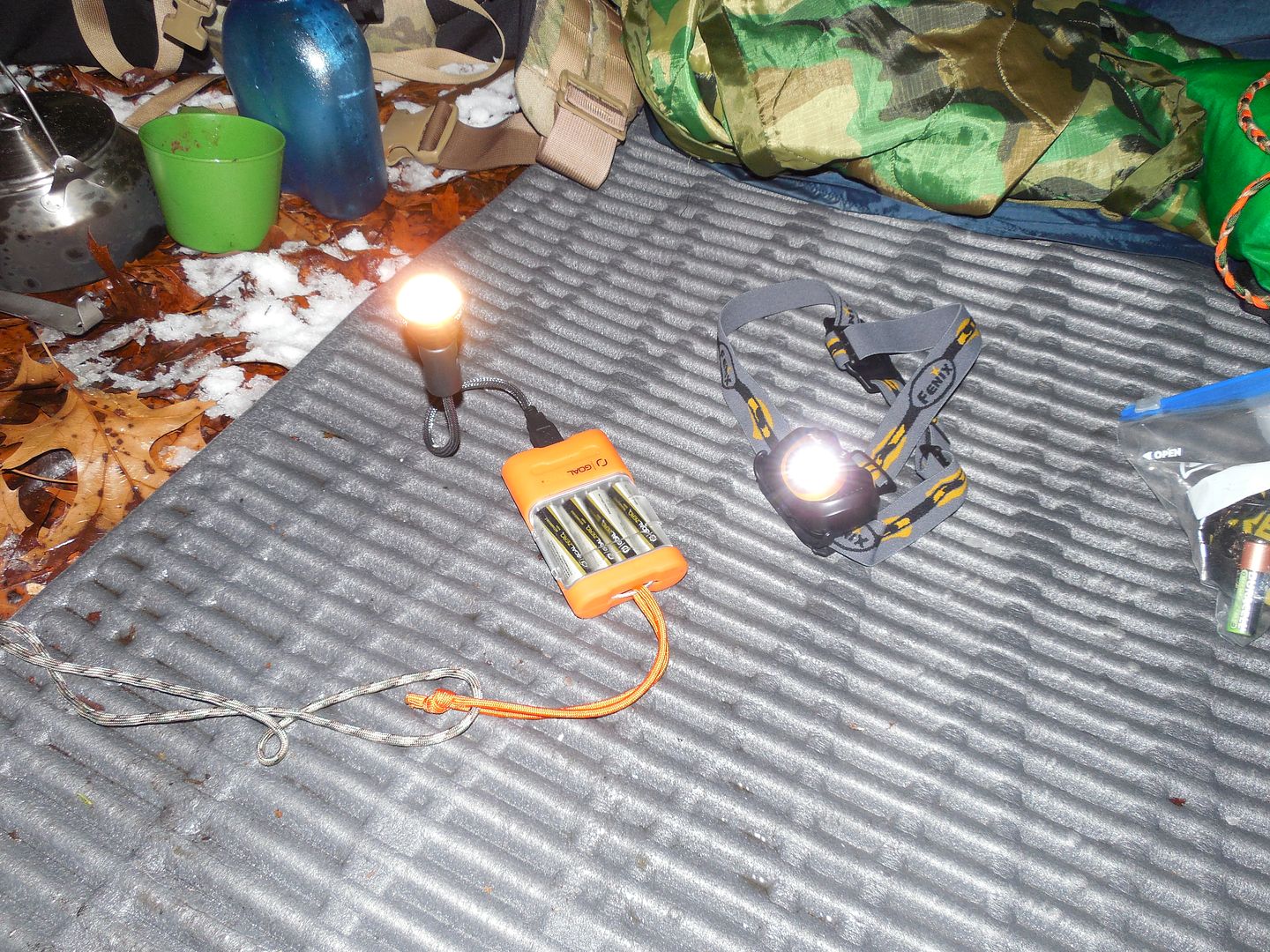
Oh snap, it's getting late. Time to head out.
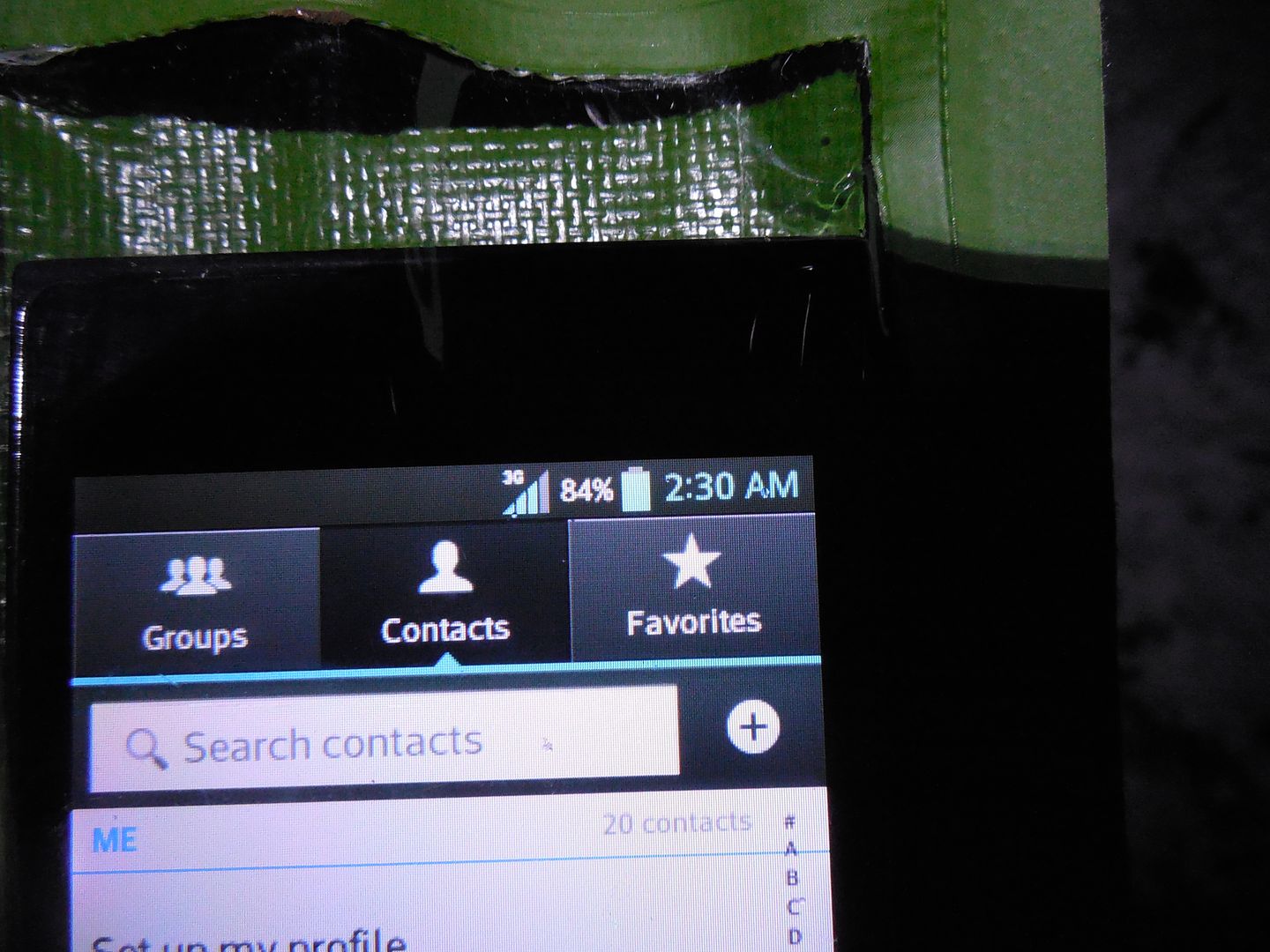
The EMR compressed down some. For me it's easier to unload a larger pack than try to make an overloaded smaller pack work.
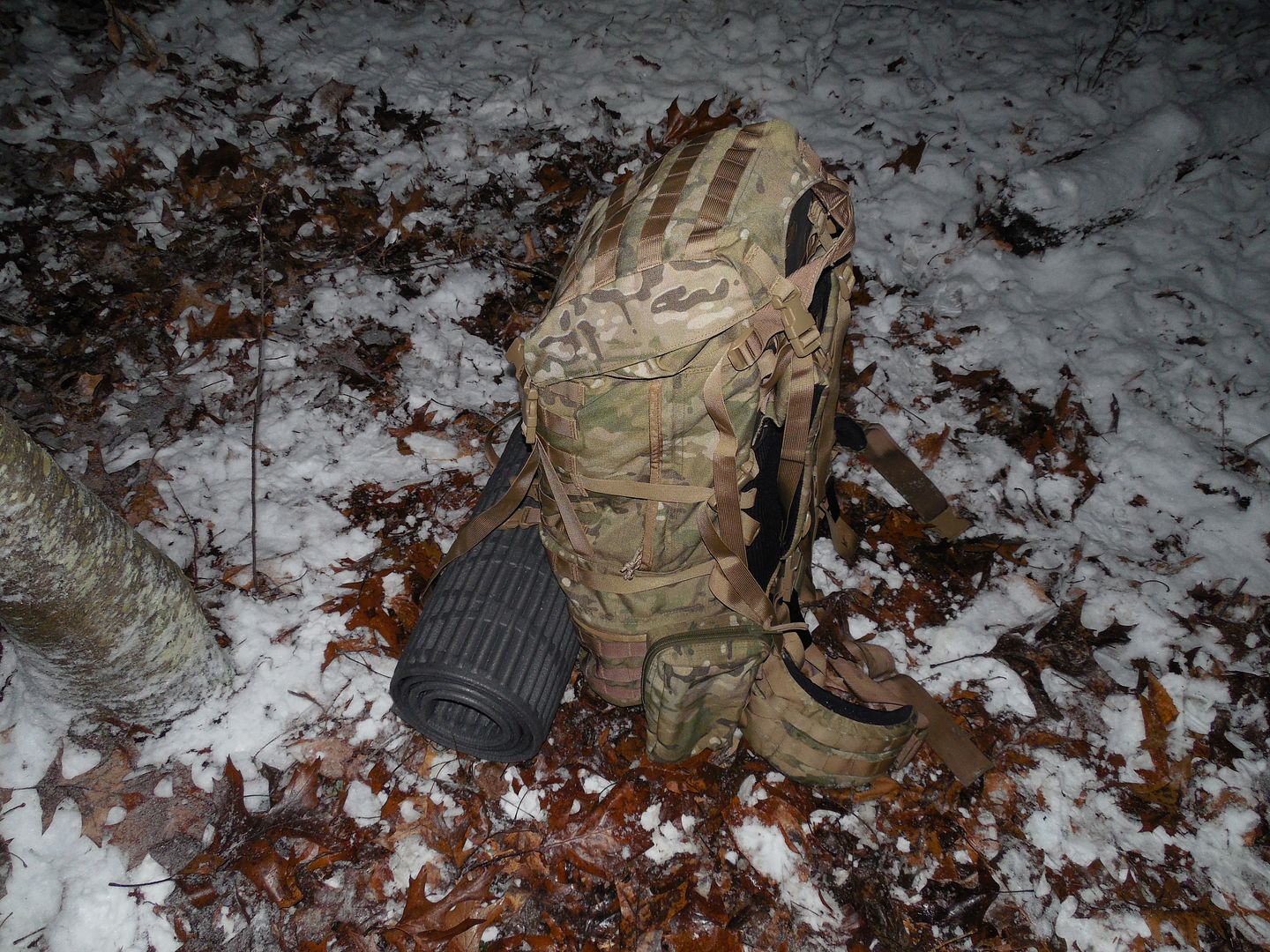
The Fenix HL30 is amazingly bright for a 2XAA headlamp. It also has a single red 5mm LED. I hardly ever use red lights.

Thought I saw the moon but looked up and it wasn't there.

Snow picked up a bit on the hike out but that just added to the good times. There is a silence to the woods when it snows. Peaceful.
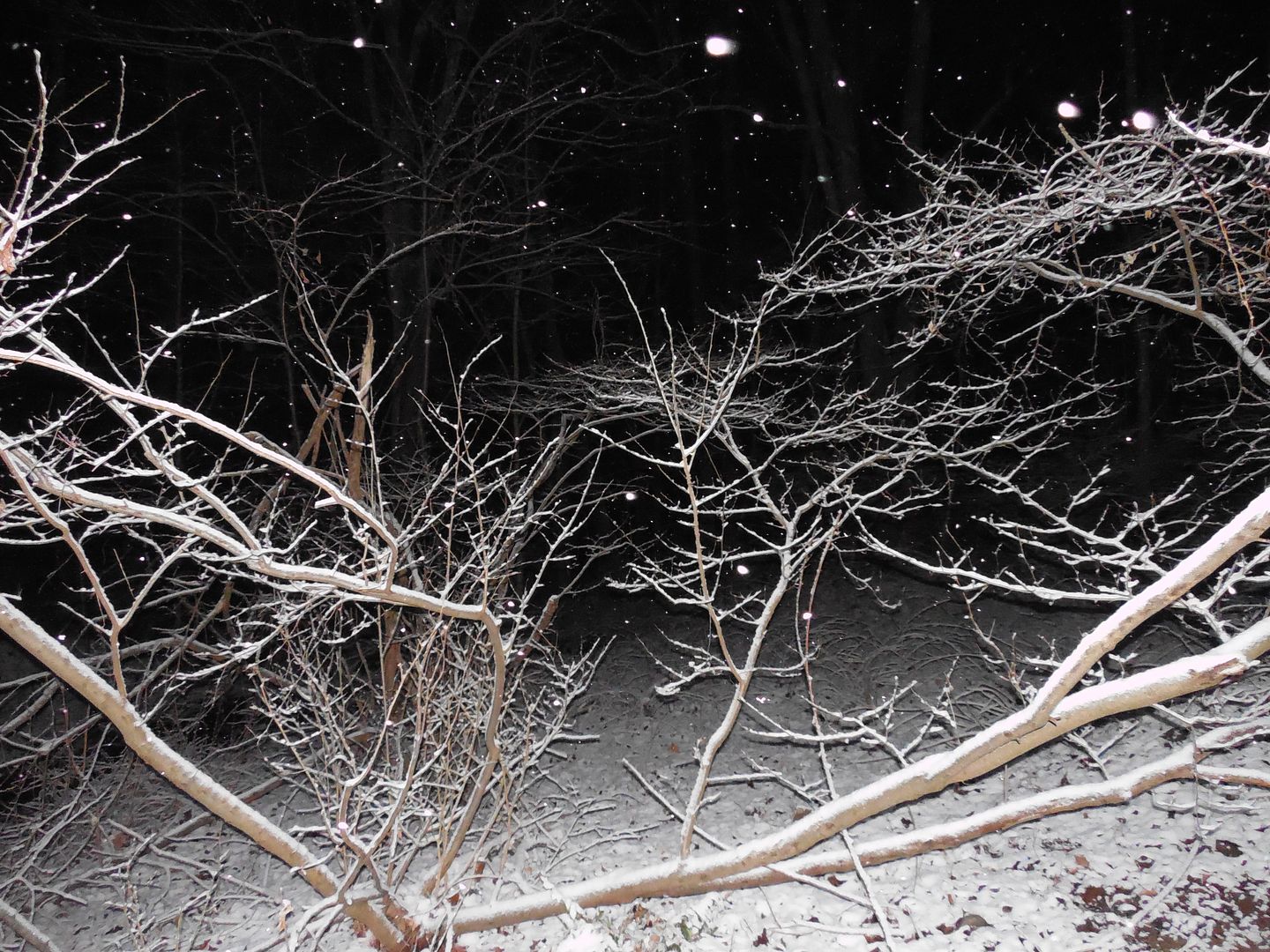
Goes without saying a night hike has an increased chance of getting lost. There is a greater chance of slips, trips and falls. Some areas are closed at dusk. It's probably better to dayhike a new area before going nocturnal. Here is a short video about the night shelter for those who are interested. There is also some action footage of the now famous 20 dollar Ebay stove.
[video=youtube;AJb178xEsWk]http://www.youtube.com/watch?v=AJb178xEsWk[/video]
Thanks for looking.
It was raining for days and now the temps dipped just enough for light snow.

Sometimes hanging beech leaves make for good tinder however given the weather they're frozen. So far no birch bark either.

Dang fallen trees. Hate getting hung up on them. They always remind me of those movie deaths when someone gets impaled on a stake.

This is a nice semi sheltered spot for a night shelter. A little grove of guessing Black birch and Iron wood/Blue beech.

A night what? A day camp is a temporary shelter for the purpose of rest and refreshment or if weather makes further travel too difficult. Once the meal is done and or the weather breaks a day shelter is taken down. The night shelter serves a similar purpose. Both shelter types should be fast and easy to setup. Minimal investment of effort. I normally use a small tarp like a Siltarp 1, MEST or poncho for this purpose. Keep in mind that any day shelter could be tasked with becoming an overnight camp. With a night shelter the odds are greater in this reguard. The same rules for a standard overnight camp applies to both a daycamp and nightcamp. I Look for widow makers, flash flood risks, mud/rock slide risks, drainage issues etc etc etc. Being near water is nice and might be necessary in some situations but not a requirement given the short duration.
Cracked out the adjustable ready to go ridgeline. I always keep my raingear, FAK, water and day/night shelter gear in an easy to access area within my pack. The last thing I want to do is dump the contents of my pack getting to these items. More so in the dark.

A few minutes later and bingo I have some shelter! For a temporary shelter I prefer the tarp be hung higher unless the weather is really bad. This way I can do things faster without the need to crawl around. I used Wetfire to start my wood stove. Normally I would use birch bark or other natural tinder however had a single cube for an ER inside my hiking/GetMeHome green bag so why not? Yes Wetfire can ignite wood pellets alone.

Extra large Ridgerest closed cell pad for the win.

Used my ground cloth and pack for a wind break on the side which I intend to sit and place my head when resting.
Inside:

Outside:
Notice the snow melting on the poncho where I sat. A small fire does add a bit of light and heat to the lean-to. I still need to replace my last Mylar blanket which was used as a heat reflector. Going to put some duct tape grommets on a new one.


Cooking cheese filled bannock.

No camp feels complete without a kettle boiling water.

Tested out my new lights. That's one of the pros of a night hike. Going to post a review on the Goal Zero USB light soon. Had lower output USB lights for a few years but never considered that entire class of portable lighting to be of value. Times are changing.

Oh snap, it's getting late. Time to head out.

The EMR compressed down some. For me it's easier to unload a larger pack than try to make an overloaded smaller pack work.

The Fenix HL30 is amazingly bright for a 2XAA headlamp. It also has a single red 5mm LED. I hardly ever use red lights.

Thought I saw the moon but looked up and it wasn't there.

Snow picked up a bit on the hike out but that just added to the good times. There is a silence to the woods when it snows. Peaceful.

Goes without saying a night hike has an increased chance of getting lost. There is a greater chance of slips, trips and falls. Some areas are closed at dusk. It's probably better to dayhike a new area before going nocturnal. Here is a short video about the night shelter for those who are interested. There is also some action footage of the now famous 20 dollar Ebay stove.
[video=youtube;AJb178xEsWk]http://www.youtube.com/watch?v=AJb178xEsWk[/video]
Thanks for looking.

